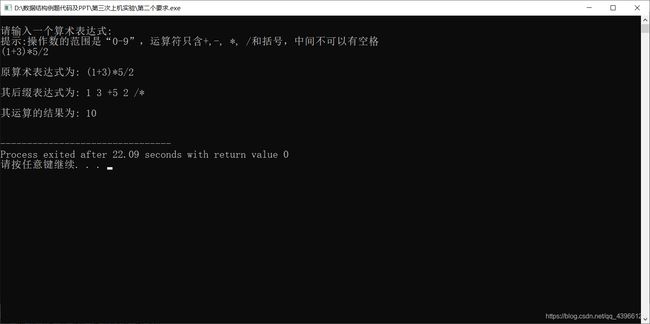链栈与循环队列的练习
链栈与循环队列的练习
这次实验分成三个部分,一共三个.cpp文件,其中第一个实验要求我用的是顺序栈,没看清要求,这个大家自行修改。
实验要求:
1、用堆栈(链栈)实现括号匹配算法,其中要求对所给出字符串中的{}、【】、()均可检测是否匹配。
2、设计算法实现计算后缀表达式求值(只限一位整数的加减乘除运算)
3、借助循环队列实现将堆栈中的给定值删除。
实验代码如下:
第一个实验要求代码:
#include运行结果如下:
 第一个实验第一次输入不要当真,随便输入,第二次才是真正的开始,哈哈!
第一个实验第一次输入不要当真,随便输入,第二次才是真正的开始,哈哈!
第二个实验要求代码:
#include #include因为没有理解老师的意思,所以跟实验要求不是很对应,但是运气好,代码通过了,哈哈哈!

